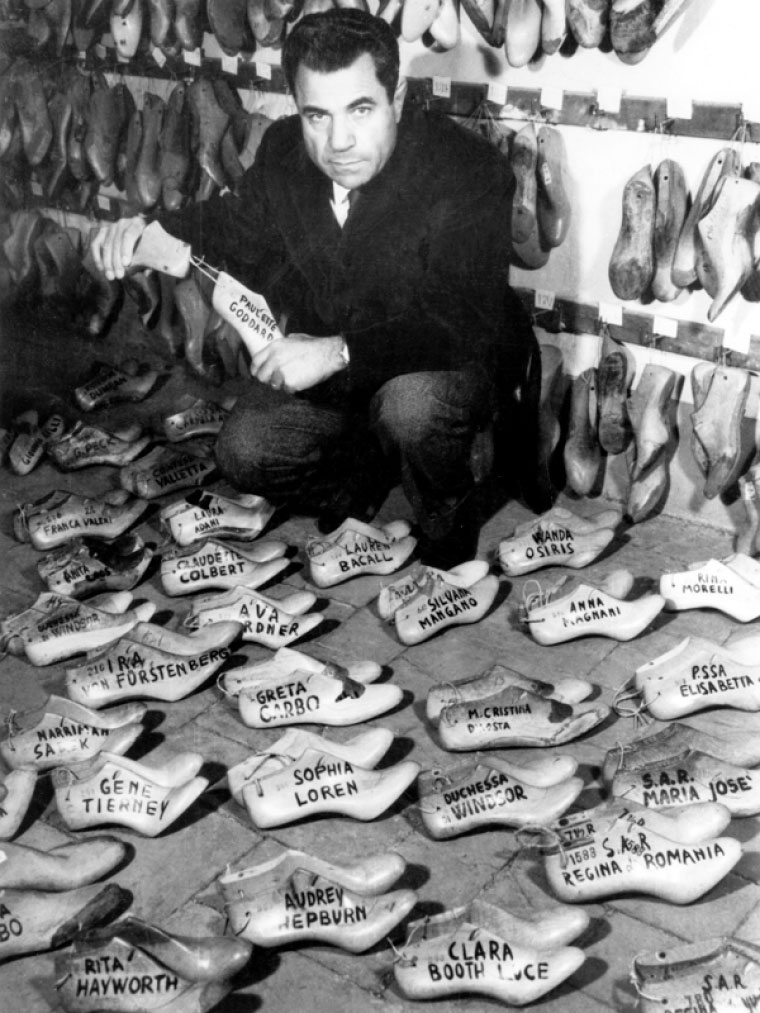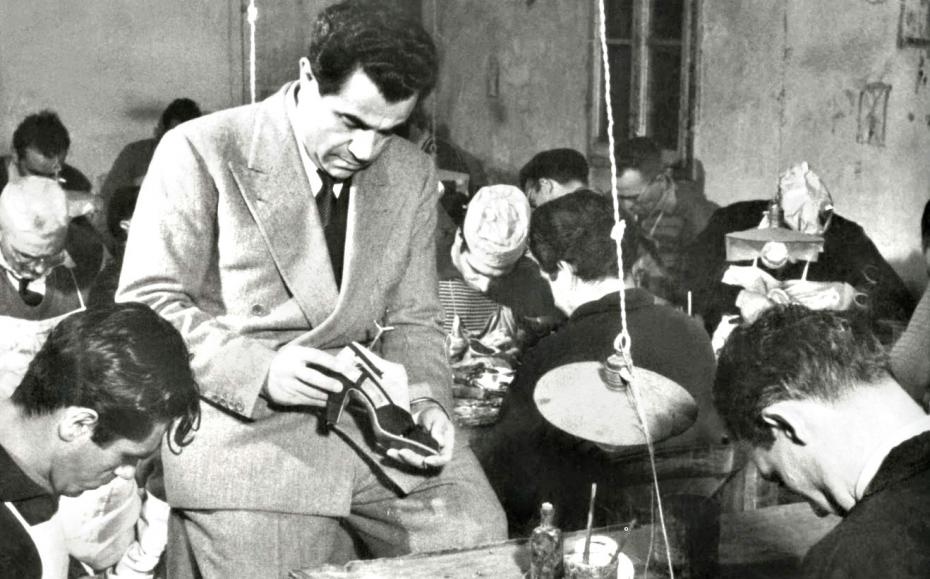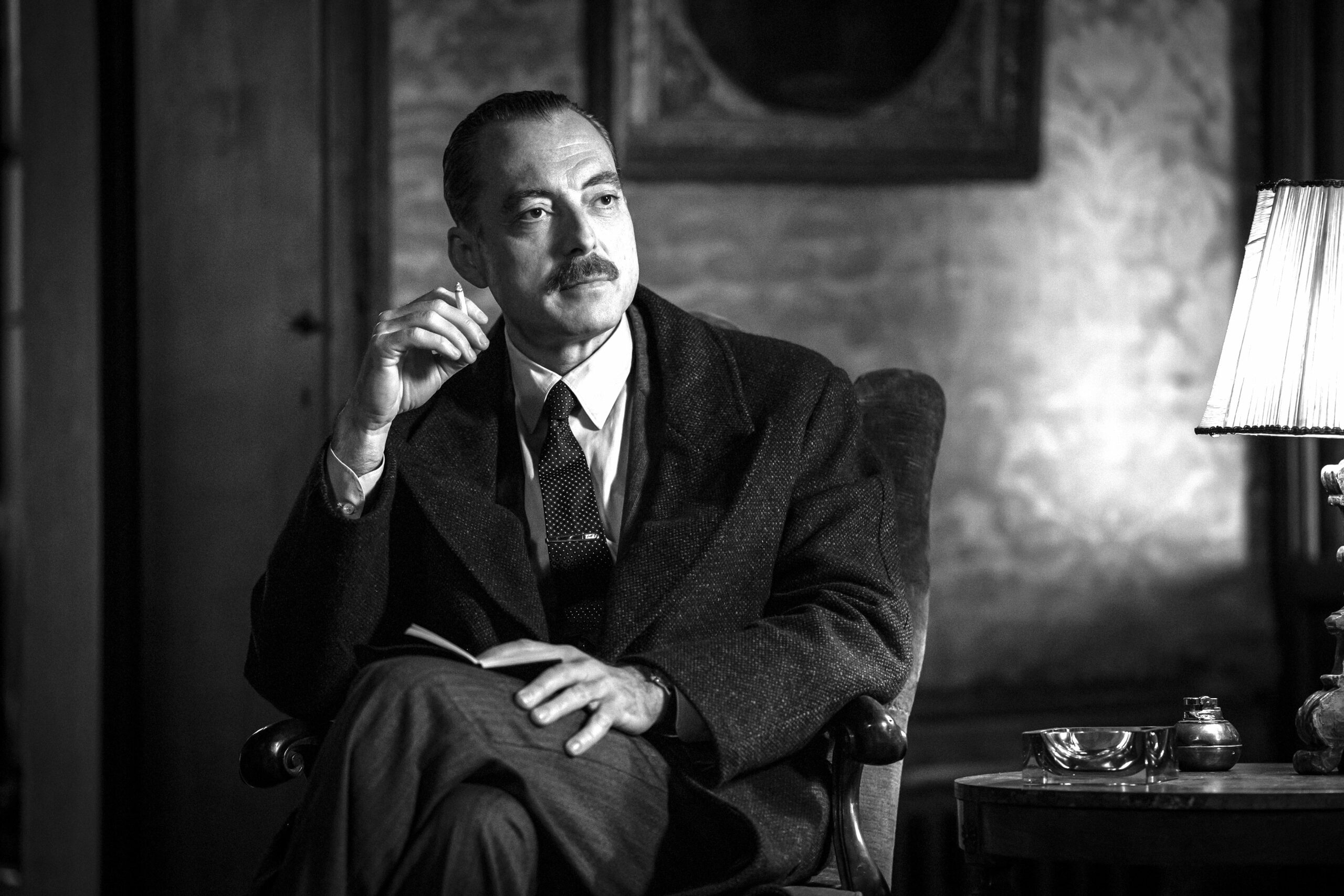When he died in 1960, everyone feared that his immense artistic and entrepreneurial patrimony would be dispersed among family disputes and economic claims. Instead, this did not happen. The label founded by Salvatore Ferragamo survived by his ancestors and gained new energy from his wife Wanda and their six children. Today, the label Ferragamo represents one of the most long-lived limited panorama of the elite in the world of fashion, giving to history an intuition and a tenacity beyond the norm.

Born in 1898 in Bonito, a small town located in the province of Avellino, Salvatore was the eleventh of fourteen children in his family. In the early years of the twentieth century for a family of this size, living in a corner of Italy detached from economic opportunities, could leave only one choice: that of emigrating and leaving room for those who stayed behind.
After his first years of elementary school, Salvatore decided to take up the craft of shoemaking, a profession considered among the most humble in southern Italy at the beginning of the century. This passion of his came about when he was making shoes for his sisters, and it would never again leave him.
Although his family opposed this, being a field which would give no future for their 11 year-old, Salvatore dropped out of school in third grade and was taken on as an apprentice to a renowned shoemaker in Naples. It would only be two years later that he would become the owner of a small shop in Bonito, creating his first custom-made shoes for women. His intention was to give dignity to this craft through the research of functional and aesthetic perfection, so the young Ferragamo began learning the secrets of the trade and joined his brothers in the United States in 1915, at the time when Italy was about to become involved in the nightmare of WWI.
The young Ferragamo found his first job in a shoe factory in Boston, the city in which the boy from the Irpinia area of Campania learned to deal with industrial technology. Ferragamo sensed the great potential of industrialization of the shoe business, but decided to refuse this kind of approach with the art of shoes and decided to move to the west coast of the United States, choosing California. Salvatore’s brothers lived in Santa Barbara, who, overtaken by the enthusiasm of their brother’s resourcefulness, accepted to go into business with him. The Ferragamo brothers opened their first shoe repair shop which quickly found great success. In a city that was experiencing the excitement of the film industry, in constant and impetuous expansion, the young Irpinian realized the potential of a new business endeavor and left the shop in Santa Barbara to his brothers, focusing on a new approach, the design of footwear for movies.
From his hands we begin to see the rise of cowboy boots and Roman and Egyptian sandals, products that captivated the actors even beyond their specific function, so much so that they began ordering them for their everyday life. The great ‘divas’ of that period discovered the Italian products of Ferragamo and have not detached themselves from them ever since.
Striving for perfection, Salvatore Ferragamo studied every possible detail in order to create “shoes that always fit well” and to improve his technique, he took up human anatomy courses at the University of Los Angeles, where he acquired basic concepts for his future productions. His chemical engineering and mathematical courses also helped him to expand his personal knowledge in the treatment and processing of skins and of other materials, which were later used in his own creations.
Following the migratory waves of the studios, in 1923, Ferragamo transferred his activity to the area of Hollywood, leaving his skeptical brothers behind and starting a relationship of collaboration with the most famous producers of that period. The list of Ferragamo’s clients soon became embellished with famous names of American cinematography: Rudolph Valentino, Gloria Swanson, Joan Crawford soon became his ideal ambassadors and they contributed to transforming his name into a veritable high quality label.
The artisan from Bonito worked on, among other things, his own personal revolution in design, making women’s shoes more open and more revealing, which until then were strictly closed and laced right up to the ankle, and creating the very first models of sandals. For this Ferragamo received unexpected and striking success, so much so that he was not able to keep up with all the orders. Although Ferragamo’s shoes were not orthopedic, they were sturdy and comfortable, remarkably respecting the anatomic equilibrium of the body, and drew attention for their refined elegance. This was the success that the very young shoemaker, who had left his homeland in Campagna, had achieved as he conquered the States!
The immense bulk of his orders were not able to be fulfilled by his company quickly enough, especially in the cinematographic world that demanded increasingly larger numbers of Ferragamo shoes. He began looking for competent shoemakers throughout all of America but did not find any artisans that were able to live up to the expectations of his requests. Having to choose between the industrialization and the reorganization of his handmade production, Ferragamo chose the third option, that of returning to Italy.
Only after several months of fruitless attempts (in the South, in the North and in other regions of Central Italy) the shoemaker finally found the artisans that were suited to his production in Florence, and in Dante Alighieri’s city, in via Mannelli, he set up his first workshop with sixty workers.
At this point, the sharp Italian-American entrepreneur adapted a true human assembly line, wanting, in no way, to give in to the law of industrialization. So, in just a few months, he was able to return to the American shores with his first samples. But in 1933, Ferragamo’s company unexpectedly found itself up against closed doors for exportation to the United States as well as incompetent management of his very own chief executive. Ferragamo was forced to declare bankruptcy but he did not lose faith. The boy from Irpinia started up again on the Italian market and obtained a new clientele which, in 1936, brought him to the peak of his business, though short-lived on the world stage marked by the tragedy of the Second World War.
During this period he survived exhausting his entire creativity. One of his most popular creations, the wedgie made of cork, is from those years. They are solid and light shoes, patented in 1936 and were immediately copied by all designers. With great sacrifices, Ferragamo was able to buy Palazzo Spini Feroni in Florence. It was here that he created the headquarters for his company but his name by now was known all over the world. In 1940, during the war, he was able to find the time to get married to Wanda Miletti, the daughter of the municipal doctor of Bonito.
He won over Hollywood in a big way with an endless variety of elegant, frivolous, bizarre and exclusive styles. The desire for life, for extravagance and for joy, after so much death and destruction, brought Salvatore to design shoes with high heels, reinforced in metal and an invisible sandal with the upper part of the shoe made of nylon thread. These were all memorable creations that earned him the Oscar for fashion, the “Nieman Marcus Award”, awarded to a shoemaker for the first time in 1947.
His clientele at this point boasted high-sounding names. Celebrities like Greta Garbo, Anna Magnani, the Dukes of Windsor, and Audrey Hepburn arrived in Florence giving the shape of their foot and commissioning their shoes. Ferragamo decided to start the first automation of his production, keeping however, under strict control that very production and leaving only the finishing touches to the human hand. This was a clear message to the industry, a message received with courage and determination by his wife and oldest daughter Fiamma, both who took over the business after his death in 1960.
After his death, Fiamma maintained the ability to give to the label that essential historical continuity to project beyond its founder, also achieving for herself the Nieman Marcus Fashion Award in 1967 in recognition for her great sense of style. A form of recognition that in the United States was attributed to him with the Saks Fifth Avenue Award in 1969, the title of Designer of the Year in 1988, and the Fashion Footwear Association of New York Medal of Honor in 1993.
Today Ferragamo is a leading company in the fashion industry throughout the world, with a array of products ranging from footwear to fragrances to eyewear, that no longer have the production times that Salvatore worked with but that, always concentrating on the quality, would still satisfy the little artisan from Bonito, the conquistador of the American dream.






























